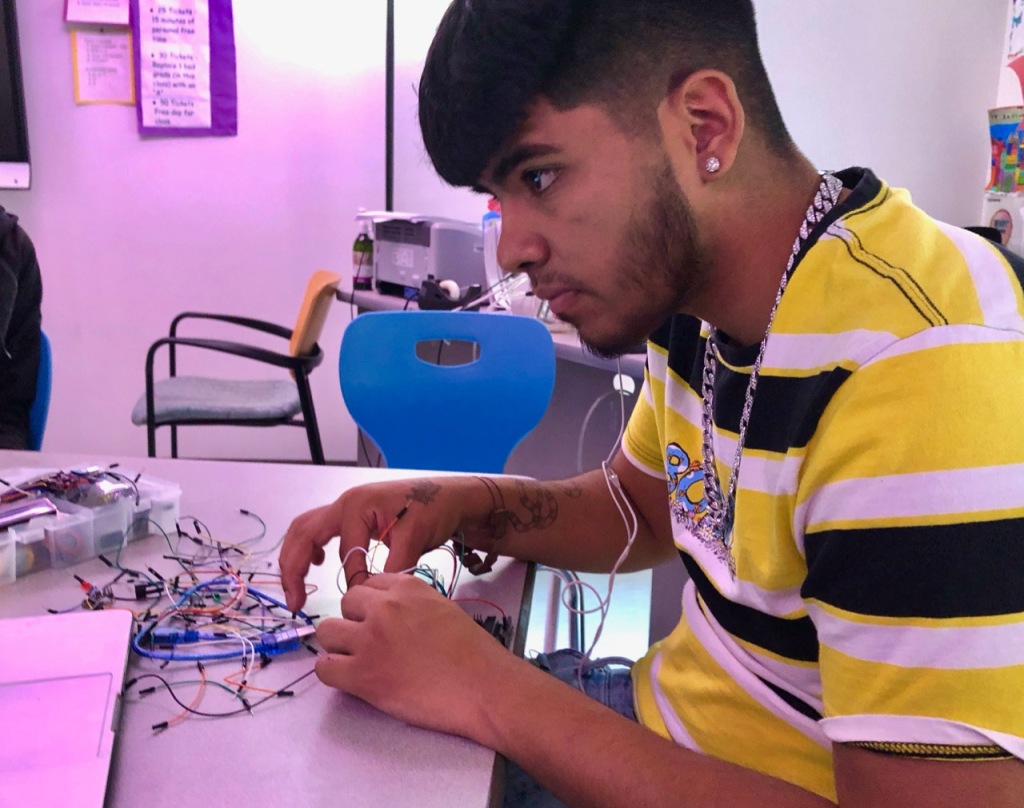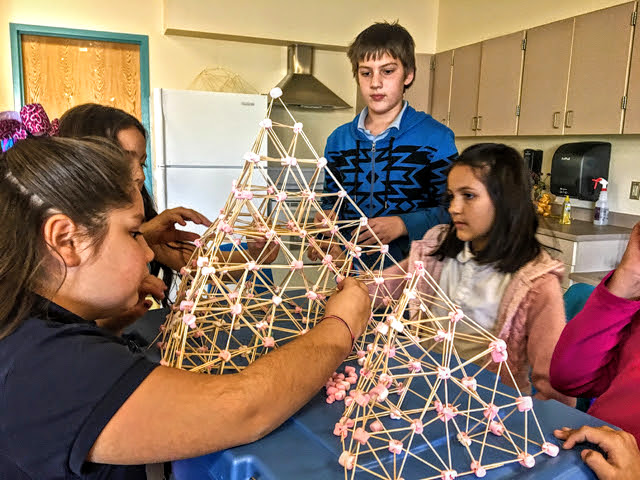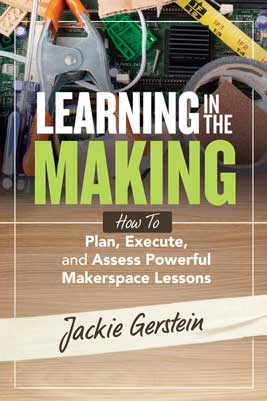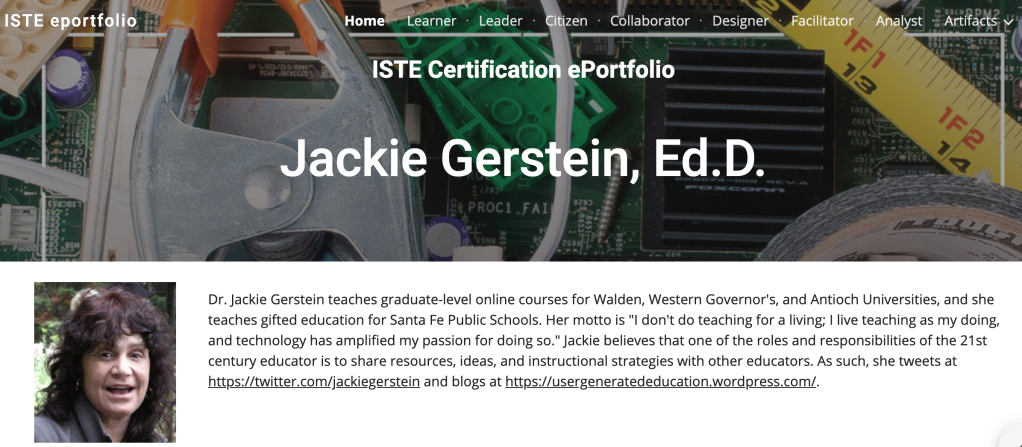Posts Tagged ‘student-centric learrning’
Reimagining Education: A Call for Action
Many of us have been discussing educational reform for decades. Given the unprecedented time of COVID19 and its effect on education, it is a perfect time to revisit and reimagine the purpose, operations, and skills related to a powerful education. Some of the issues that have emerged and are still emerging include: the social emotional health of learners, a realization that students aren’t able to be independent and self-directed learning, and an awareness of inequities that exist in the United States. It has become blatantly obvious that students can’t learn effectively at home – especially without teacher direction throughout the school day.
It’s a perfect time for educators to reimagine an education they wish they had during their own school years so that their learners can have such an education.
Here is what I propose that should be components of a reformed/re-formed education:
- Self-Determined Learning and Learner Agency
- Learner Voice and Choice
- Just-In-Time Learning
- Whole Person Learning
- Educator as a Tour Guide of Learning Possibilities
- Interest-Based Affinity Groups
- Use of the Learner’s Community
- Vigorous, Authentic Tasks
- Executive Function Skills Development
- A Focus on Social Emotional Health
- Anti-Racist Awareness and Actions

Self-Determined Learning and Learner Agency
Learners of all ages beginning in 2nd or 3rd grade can engage in self-determined and self-driven learning where they are not only deciding the direction of their learning journey, but also producing content that adds value and worth to related content areas and fields of study.
The learners in a self-directed learning environment where learner agency prevails:
- Determine what they want to learn and develop their own learning plan for their learning, based on a broad range of desired outcomes.
- Use their learning preferences and related technologies to decide how they will learn their material based on their own desired outcomes.
- Form their own learning communities possibly using social networking tools suggested and/or set up by the educator. Possible networks, many with corresponding apps, include: Facebook, Twitter, Edmodo, Instagram, TikTok, blogging sites, Youtube, and other social networks.
- Utilize the expertise of educators and other members of their learning communities who can introduce content-related resources and suggest online tools that the learners could use to demonstrate and produce learning artifacts.
- Demonstrate their learning through methods and means that work best for them. It could include blogging, creating photo essays, doing screencasts, making videos or podcasts, drawing, singing, dancing, etc.
- Take the initiative to seek feedback about their work from educators and their peers. It is their choice to utilize that feedback or not.
Learner Choice and Voice
Education works when people have opportunities to find and develop unaccessed or unknown voices and skills. Audre Lorde poignantly describes this “transformation of silence into language and action [as] an act of self-revelation.” Opportunities for flexibility and choice assist learners in finding passion, voice, and revelation through their work. (Student Voice Leads to Student Choice)
Some strategies for giving learners voice and choice can be found in the following infographic:
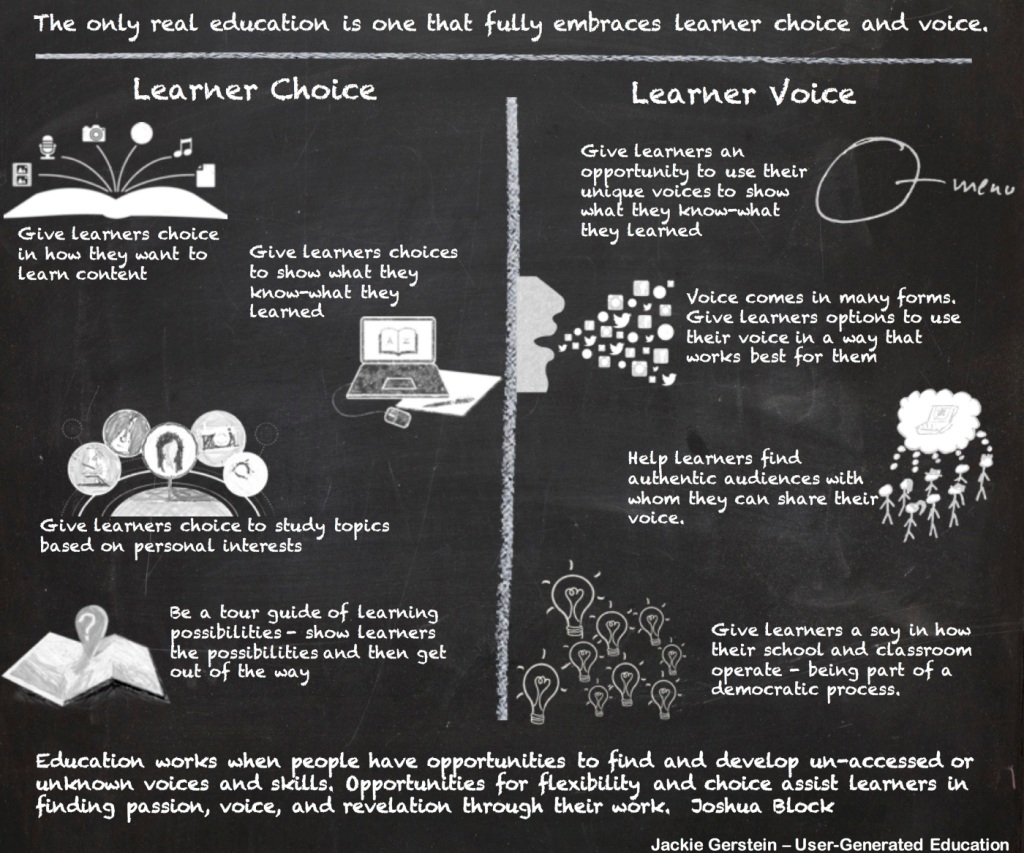
Just-In-Time Learning
Currently, most schooling focuses on just-in-case teaching and learning. Students are asked to learn material throughout their schooling just-in-case they need it someday. I contend that after students learn the basics of reading, writing, and math, they are asked to learn way too much content that may never use.
Just-in-time learning is a concept that has become popularized in connection to organizational development. “Just-in-time learning is an approach to individual or organizational and development that promotes need-related training be readily available exactly when and how it is needed by the learner” (Just-In-Time Learning).
Kids (and adults) who need to access information in order to learn something or improve their performance – think video gaming, cooking, learning to play an instrument, fixing something, making something – often go directly to the Internet, most notably Youtube, to get some form of tutorial. This is just-in-time learning. Information is needed “then and there,” which motivates the learner to seek that information “then and there.”
In self-directed, interest-driven education, just-in-time learning becomes the norm. The educator, as truly the guide on the side, encourages and assists learners in engaging in just-in-time learning as a natural part of their learning process.
Whole Person Learning
As someone whose roots is in outdoor and experiential education, I believe a good learning experience engages the intellectual, physical, emotional, and social aspects of the learner. The focus becomes on helping educating the whole learner – not just their brain or intellect. Some have called this head, heart, and hand learning.
The 21st century is placing great demands on our students and educational system. To meet those demands, we recognize that educating the head (cognitive domain), exclusive of the heart and hand (affective and behavioral domains), is no longer educational best practice. It is the education of our students’ heads, hearts and hands that will genuinely prepare them for success in college, career and civic life. (Educating the Head, Heart, and Hand for the 21st Century)
Many researchers (Henting, 1997; Bruner, 2000; Stoll and Fink, 2000; Faultisch, 1999) believe, that quality education and successful education reforms can be achieved by changing the learning culture (with attention paid to the completeness and integrativity of a human being), especially in the context of lifelong learning which integrates all three domains of learning: cognitive (head), affective (heart) and psychomotor (hands). (“Head, Heart and Hands Learning”- A challenge for contemporary education)
Obviously to engage the head, heart, and hands, sitting at a desk won’t do it. Simply put, learners needed to move their bodies and have an emotional connection to the material to increase its stickiness.
Educator as the Tour Guide of Learning Possibilities
The educator, in a reformed model of education, steps back to let the learners take over their own personal learning. The educator lets go of expectations what the final produce should be; should look like; should do. The educator becomes a provider of resources, feedback giver, and communications facilitator. S/he becomes a tour guide of learning possibilities. S/he shows learners the possibilities and then gets out of the way.
he educator’s role truly becomes that of guide-as-the-side, coach, resource-suggester, and cheerleader as learners create their own learning journey. The educator has more life experience, knows (hopefully) about the process of learning, and has more procedural knowledge about how to find, identify, and use informational resources and social networking for learning purposes. Not only, then, does the educator help steer students in some more productive directions, s/he models the process of self-determined learning increasing the students’ aptitude for this type of learning. Learners, themselves, then also become mentors, teachers, and model learning for one another sharing best practices and strategies for effective learning.
Interest-Based Affinity Groups
Young people often find their own interest based affinity groups online. These include kids gathering via Discord or Twitch.tv to discuss video games, marginalized youth finding others like them through social media, and even groups as specific as those who share their art anime with one another for feedback.
Interest-based, affinity groups groups have been described in the report, an agenda for RESEARCH AND DESIGN A research synthesis report of the Connected Learning Research Network:
The primary driver of participation for interest-driven activity is a sense of personal affinity, passion, and engagement. Learning in this mode is generally knowledge and expertise-driven, and evaluated by the metrics internal to the specific interest group, which can often be subcultural or quite different from what is valued by local peers or teachers.
If interest-based affinity groups are promoted in the educational setting, groups will naturally emerge as members interests emerge. They will be fluid as membership changes and members’ interests grow, evolve, and change. The groups would be mixed ages and genders where members act both as learners and as teachers. There would be situational teaching and learning. This means that if someone has the knowledge or skills related to a certain area of learning, then that member emerges as the teacher regardless of age. Contributions by all not only make everyone feel valued, the community as a whole will benefit.
The essence of the demand for freedom is the need of conditions which will enable an individual to make his own special contribution to a group interest, and to partake of its activities in such ways that social guidance shall be a matter of his own mental attitude, and not a mere authoritative dictation of his acts.
John Dewey, Education Philosopher in Early 20th Century
Use of the Learner’s Community
Schools tend to be separate from the community – often not physically but in its use of its resources. The educator as a tour guide of learning possibilities assists the learner in locating and utilizing their community including local businesses, museums, parks, social service agencies, historical associations but it can be as simple as the learners going outside to do a science, writing or art project. Learning in the community is a form of place-based learning:
Place-Based Education (PBE) is an approach to learning that takes advantage of geography to create authentic, meaningful and engaging
personalized learning for students. More specifically, Place-Based Education is defined as an immersive learning experience that “places students in local heritage, cultures, landscapes, opportunities and experiences, and uses these as a foundation for the study of language arts, mathematics, social studies, science and other subjects across the curriculum.” (What is Place Based Learning)
For learners new to using their community as part of their learning process, the educator’s responsibility is to assist learners in both navigating through their communities and to identify community resources that can help with their learning process.
Vigorous and Authentic Learning Experiences
Providing authentic and vigorous learning experiences to all learners should be the highest prior for all administrators, curriculum developers, and teachers.
Authentic learning is learning designed to connect what students are taught in school to real-world issues, problems, and applications; learning experiences should mirror the complexities and ambiguities of real life. Students work towards production of discourse, products, and performances that have value or meaning beyond success in school; this is learning by doing approach (Authentic learning: what, why and how?).
In education, the term authentic learning refers to a wide variety of educational and instructional techniques focused on connecting what students are taught in school to real-world issues, problems, and applications. The basic idea is that students are more likely to be interested in what they are learning, more motivated to learn new concepts and skills, and better prepared to succeed in college, careers, and adulthood if what they are learning mirrors real-life contexts, equips them with practical and useful skills, and addresses topics that are relevant and applicable to their lives outside of school. For related discussions, see 21st century skills, relevance, and vigor (Authentic Learning).
The bottom line, in my perspective, is that learners view their experiences as having relevancy to their own lives, that they address their interests and needs. The following graphic shows some of the benefits of authentic and vigorous learning.
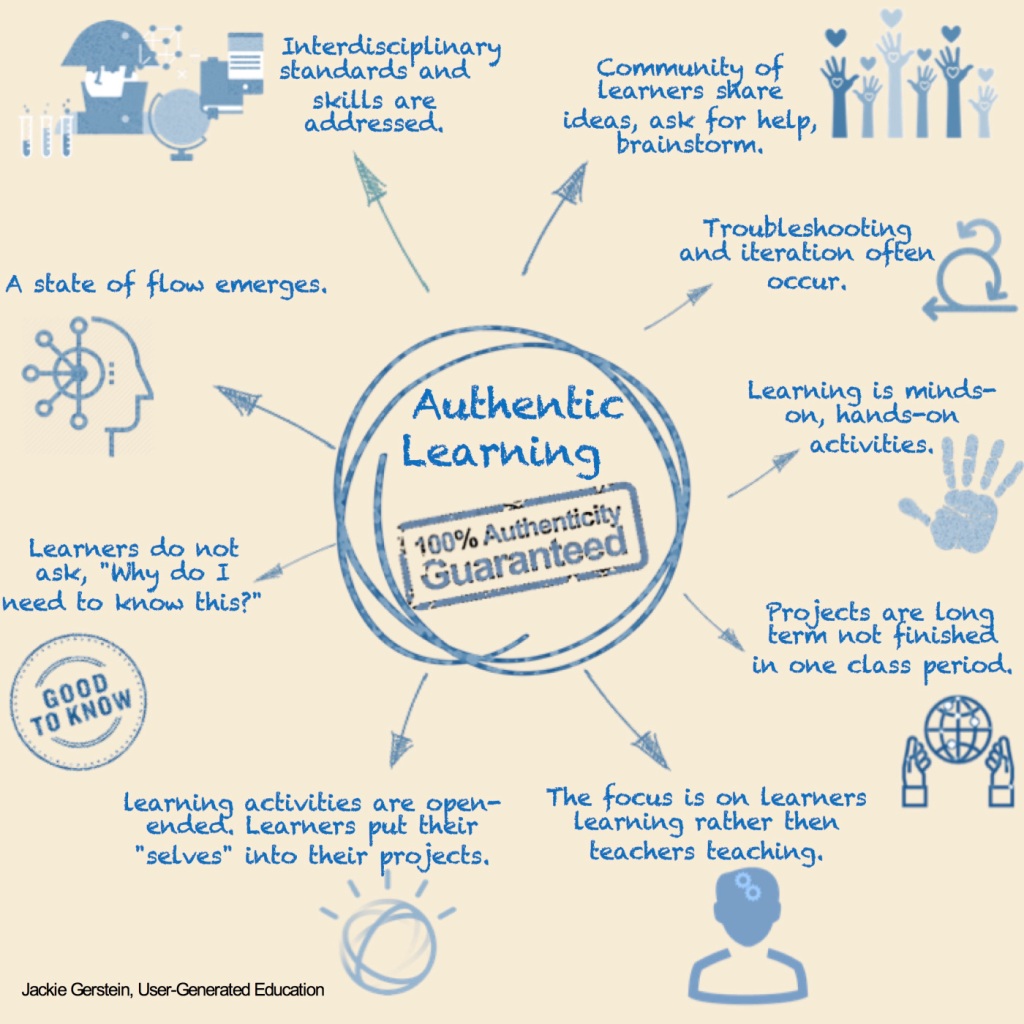
Executive Function Skills Development
Most educators would agree that a purpose of education is to assist learners in developing life skills which will translate to their lives outside of the school setting. These include goal setting, organizational skills, time management, and strategies to learn new things. They are skills or ability sets that are important for students to learn any content area knowledge. These are often discussed in the context of executive functions:
In their book, “Executive Skills in Children and Adolescents,” Peg Dawson, EdD and Richard Guare, PhD state “These [executive function] skills help us create a picture or goal, a path to that goal, and the resources we need along the way”(p 2). They identify 10 types of executive function skills that work together; namely: Sustaining attention, shifting attention, inhibiting impulses, initiating activity, planning and organization, organization of materials, time management, working memory and emotional control http://kooltools4students.weebly.com/at-and-executive-functioning.html
Most young people, themselves, would note there are skills that could assist them in being more successful in both school and out of school settings. Most would agree that organization skills, goals setting, and time management are relevant to other areas of their lives.
Executive functions and self-regulating skills development should be part of the school curriculum regardless of the age and demographics of the student body. Using and teaching these skills often have the advantage of becoming intrinsically motivated and self-directed as well as often making sense to students as something that has meaning and relevancy.
Here are some additional resources to assist learners in developing their executive function skills:
- Helping Students Develop Executive Function Skills –https://www.edutopia.org/article/helping-students-develop-executive-function-skills
- Creating an arc of change –https://www.educationdive.com/spons/creating-an-arc-of-change/563293/
A Focus on Social Emotional Learning
It’s not enough to simply fill students’ brains with facts. A successful education demands that their character be developed as well. That’s where social and emotional learning comes in. SEL is the process of helping students develop the skills to manage their emotions, resolve conflict nonviolently, and make responsible decisions.
Research shows that promoting social and emotional skills leads to reduced violence and aggression among children, higher academic achievement, and an improved ability to function in schools and in the workplace. Students who demonstrate respect for others and practice positive interactions, and whose respectful attitudes and productive communication skills are acknowledged and rewarded, are more likely to continue to demonstrate such behavior. Students who feel secure and respected can better apply themselves to learning. (Why Champion Social and Emotional Learning?)
Here are some resources for bringing social emotional learning into the school and into the classroom:
- The CASEL Guide to Schoolwide Social and Emotional Learning – https://schoolguide.casel.org/
- How to Implement Social and Emotional Learning at Your School –https://www.edutopia.org/blog/implement-sel-at-your-school-elias-leverett-duffell-humphrey-stepney-ferrito
- 21 Ways Teachers Can Integrate Social-Emotional Learning –https://www.weareteachers.com/21-simple-ways-to-integrate-social-emotional-learning-throughout-the-day/
Anti-Racism Awareness and Actions
When you’re essentially [teaching] a kid to be anti-racist, you’re deliberately encouraging them to talk about race and Racism. You’re deliberately teaching them that all the racial groups are equals. You’re deliberately showing them, yes, there are different colors and there are different cultures. And we should value them all equally.
It’s important for parents and for educators to be intentional about preparing our young people for the world that they are inheriting and living in. To not talk about it is a disservice to all young people. So not just black students who need to learn about their blackness and their history, but white students as well and nonblack people of color need to know our country’s history and talk explicitly about it.(How Can Parents Make Their Kids Understand How To Be Anti-Racist?)
Some anti-racist learning activities can be found at:
- Anti-Racism Resources – https://www.edantiracism.com/
- Anti-Racism Resources – https://abolitionistteachingnetwork.org/
- Anti-Racist Activities for Upper Elementary and Middle School Students –https://usergeneratededucation.wordpress.com/2020/07/12/anti-racist-activities-for-upper-elementary-and-middle-school-students/
Parting Shot
Educational stakeholders such as administrators, educators, parents, and community members might look at this or a similar list of proposed educational reform actions, and say, “This is unrealistic. It can’t be done.” To them I say, “None of you expected the changes that COVID19 would force upon you and your students/children, but you made those changes. Not all have been successful, but most were successful to some degree. It demonstrates, though, that significant change is possible when all stakeholders work together.”
Sometimes Kids Just Need to Play During School
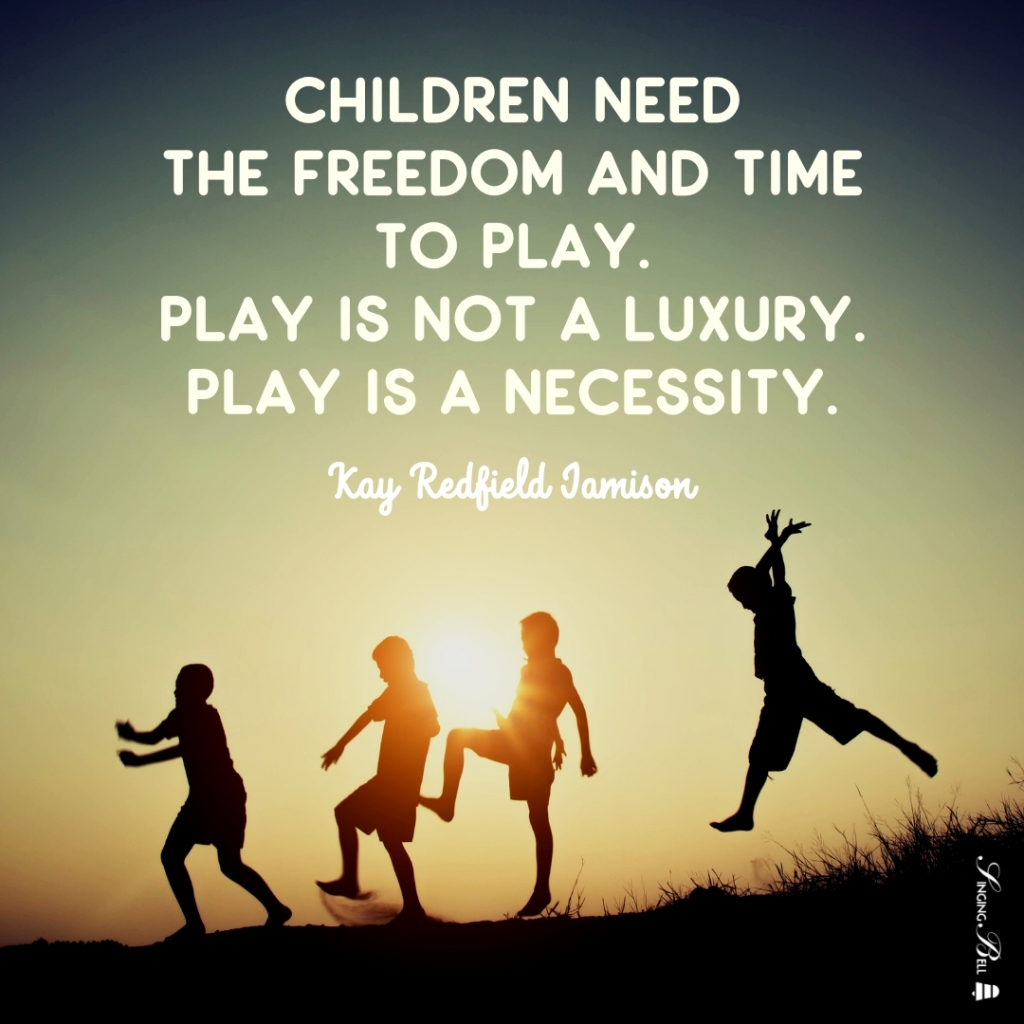
Teachers get so much pressure to meet standards and prepare students for state mandated tests, that I believe they forget their students are just kids. Because of this pressure, too many teacher education and professional development strategies stress the concept of time on task. For example, see Identifying (and Engaging Students in), Time-on-Task Activities, Increasing Time on Task, and Time on Task. This has some importance in teaching and learning but it shouldn’t always be the professed key to good instruction. This leaves little time for play. Play is important for students of all ages and grades.
This week I was reminded of the importance of playing and having fun; and that play and fun are determined by the kids, themselves. I planned a math lesson based on visual patterning, The concluding activity was for them to make a Fractal Tetrahedron, a marshmallow-toothpick tower. I had planned to have them work on it during a series of math classes, but they asked to stay through lunch and recess to work on it.
I started working with this group of gifted middle school students in January. I always have a goal of engaging learners as I believe it is the foundation of all good learning. I have had difficulty engaging them even with the use of Breakout EDU escape boxes, art activities, and games. Some engaged. Some did not. This marshmallow-toothpick activity brought a new energy into this group. All of them participated. They worked together. They laughed. They excitedly kept building and building. They added pieces to it that weren’t part of the plan. They played and had fun. A new group and classroom dynamic emerged which I believe was due with just letting them play with this project.
I discussed the beauty of spontaneous play (lots of play is spontaneous) in An Education Filled with Wonder:
One day I was substituting for a 2nd grade class. It had begun to snow as we arrived to school that morning. By mid-morning, a few inches covered the ground. It was time for recess but, as expected, a voice came over the intercom to state that recess would be inside within each teacher’s classroom. I heard the kids moan as they came to school dressed for snow with boots and winter jackets. I threw caution into the wind. I asked the kids to bundle up so we could go outside. The kids became . . . well, kids. They ran through the fresh snow in the huge back-of-the-school play area with no other students out there. They examined the footprints they created in the snow. When one found something of interest, they called the others over to see. They caught snow flakes with their tongues and made snow angles. There were no conflicts nor arguing as was common to this group of kids. They just ran, played, and laughed together as a unified group reminding me of a flock of geese. I watched them with a tear in my eye, one that reflected the beauty I was witnessing.
I wonder (even though I intuitively know the answer) whether learners in their adulthoods will better remember the types of activities I described above or their very structured time-on-task classroom activities.
The Harvard Graduate School of Education discussed the importance of play in Playing to Learn: How a pedagogy of play can enliven the classroom, for students of all ages:
Play and school can seem diametrically opposed. School is structured, often focused on order; play, by definition, is not.
But within this paradox of play and school, educators can find meaningful learning opportunities, advancing students’ academic skills as well as the social skills that will allow them to thrive in adulthood and enjoy their childhood now, according to researchers from Project Zero (PZ), a research center at the Harvard Graduate School of Education.
“Play is a strategy for learning at any age,” says Project Zero’s researcher Mara Krechevsky. While older students and their teachers might have more curricular demands than younger students, playful learning still has an important role to play — it might just look different.
There is a universality to play: children are often more relaxed and engaged during play, and it’s enjoyable — all aspects that facilitate learning.
I think most educators innately know about the importance of play but according to many of them, they don’t have the time during the school day to permit kids to play outside of recess . . . but I ask, “What are the costs of not permitting them to play?”
Universal Skills for Learners: Increasing School Relevancy
Kids are learning – but for way too many it occurs outside of the school environment rather than during school. Given today’s technologies, it makes sense and is exciting that learning occurs after schools hours, but for exciting, engaging, and profound learning not to occur during school hours is, simply put, a travesty.
I contend that school, especially in the latter part of the 20th century, had a high degree of irrelevancy but in today’s highly connected world, it is absurd, verging, in my perspective, as unethical practices. We are asking today’s students to spend so much of their school lives doing tasks that are unconnected to the the skills that need now and in their future lives.
. . . and the kids agree as studies have indicated.
Gallup has conducted more than 5 million surveys with students in grades five through 12 over the past several years. These students have come from every state and from a range of rural, suburban and urban school settings. Almost half of students who responded to the survey are engaged with school (47%), with approximately one-fourth “not engaged” (29%) and the remainder “actively disengaged” (24%). A closer look at the data by grade level reveals a disturbing trend. Engagement is strong at the end of elementary school, with nearly three-quarters of fifth-graders (74%) reporting high levels of engagement. But similar surveys have shown a gradual and steady decline in engagement from fifth grade through about 10th grade, with approximately half of students in middle school reporting high levels of engagement and about one-third of high school students reporting the same (School Engagement Is More Than Just Talk).
Just 54 percent of middle schoolers and 46 percent of high schoolers think their studies are relevant, according to new data from the nonprofit YouthTruth. Relevance was rated lowest on the survey of various measures of student engagement: if students take pride in their work, if they enjoy going to school, if their schoolwork is relevant, if they try to do their best, and if their teachers’ expectations help them with that goal (Only Half of Students Think What They’re Learning in School Is Relevant to the Real World, Survey Says).
Over five years ago, I wrote a post entitled Universal Skills All Learners Should Know How to Do in order to discuss those skills I believe are important for learners during this era. For this post, I revisited it. I revised it to now include financial literacy and civics.
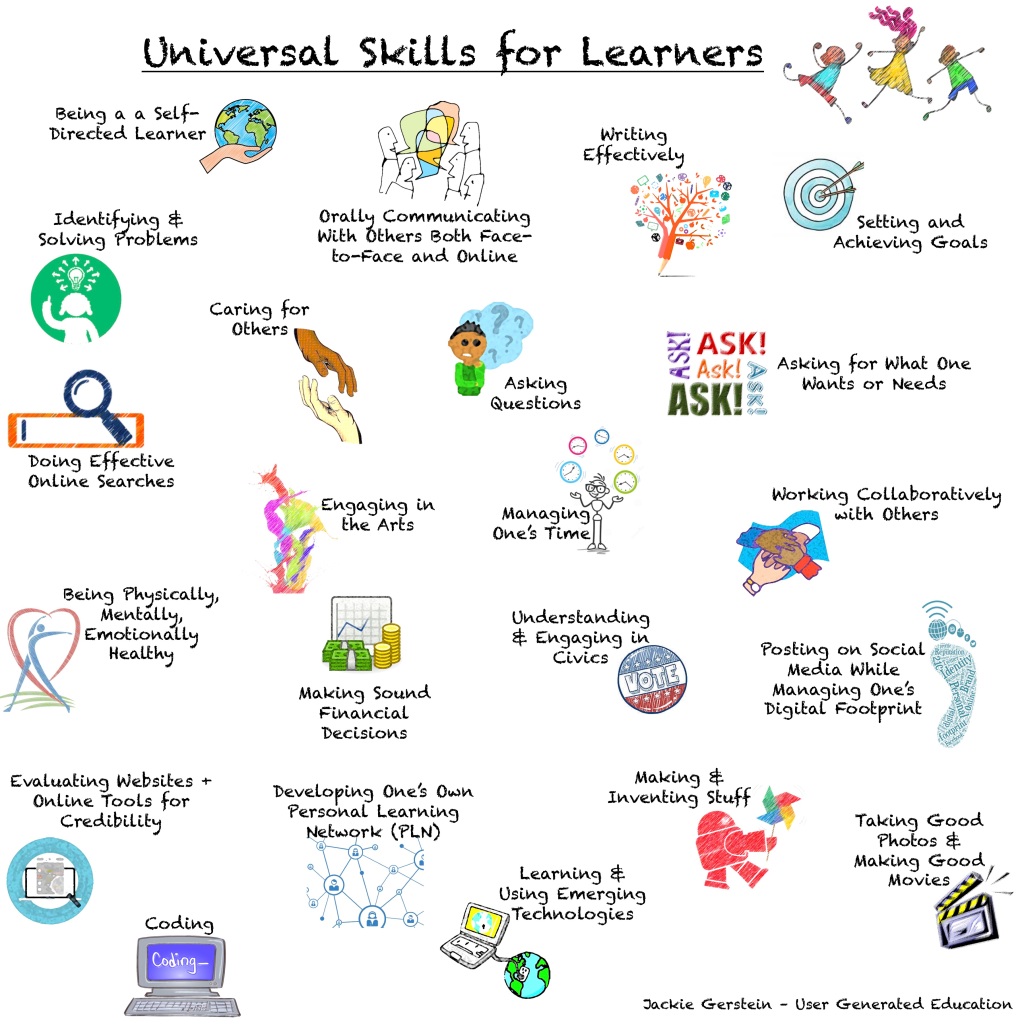
- How to be a self-directed learner – finding and using resources (both face-to-face and online) to learn and improve personal interests
- How to do effective online searches
- How to develop one’s own Personal Learning Network (PLN)
- How to post on social media while managing one’s digital footprint
- How to evaluate websites and online tools for credibility
- How to orally communicate with others both face-to-face and online (e.g., Facetime, Skype, Google Handouts)
- How to write effectively
- How to ask questions
- How to effectively ask for what one wants or needs
- How to set and achieve goals
- How to work collaboratively with others
- How to manage one’s own time
- How to be healthy – physically and emotionally
- How to care for others
- How to Enjoy and Engage in the Arts
- How to identify and solve problems
- How to make sound financial decisions
- How to understand and engage in civics
- How to take professional looking photos; make professional looking videos
- How to learn and use emerging technologies
- How to make and invent stuff
- How to code
I think most administrators and educators (and learners) would agree with the importance of most of the skills on this list to assist learners to be successful now and in their futures. Sadly, though, too few of these skills are directly and intentionally taught to learners: writing, speaking, and for more progressive schools, engaging in the arts and the computer science related skills. Is the current school system model really the best we can do?
Going On A STEM-Maker Journey WITH My Students
Last semester, I worked with a few high school students to create a project for the New Mexico Governor’s STEM Challenge. Being a learner-centric, process-oriented educator (hence, the name of my blog – User Generated Education), I embraced the following practices during this project.
- Learners selected and developed their problem statement and guiding question.
- Learners naturally tapped into one another’s strengths, managing their strengths without any intervention from me. Some were good at problem conception, others at envisioning solutions, others at research, and still others at creating the graphics.
- My role was that of resource provider and feedback provider. I shared and explained the challenge requirements, reviewed the qualities of valid websites, gave feedback on their research and written work, and provided them with materials and tools such as Arduinos.
- Community resources were used reinforcing that communities contain experts – that teachers don’t have to be experts at everything. We visited the local makerspace so the learners could learn and use their 3d printers and laser cutter.
- Given the nature of this project-based, problem-based format, grading was based strictly on class participation using the criteria of, “Worked on the project during class time.”
Although, I often approach my classroom instruction using the practices as specified above, this one took me even farther from a place of knowing. They selected CO2 emissions and a chemistry-based solution of which I knew very little, so I was not a content expert. We learned about this together. I had a little experience with Arduinos but not lots so I was not a technology expert. We learned a lot more about how these worked together. We went on this journey together and I loved being a co-learner with my students.
Here is a highlight video of their project:
Much to my chagrin, they did not win an award (19 awards were given to the 43 entries). Their rewards, though, cannot be overstated:
- They learned some concrete and practical skills from going to the local makerspace, and getting instruction on their 3D printers and laser cutter. They also helped them work out some difficulties they had troubleshooting problems with the Arduino part of the project.
- They experienced the rewards and frustrations of working on a months long project including persistence, having a growth mindset, dealing with failure, and following through with a project through its completion.
- One of the students has pretty much checked out of school. She was mostly fully engaged throughout the duration of this project.
Even though their excitement about attending and presenting their project was obvious during the hour long ride home as they spent that time brainstorming ideas for projects for next year’s Governor’s STEM Challenge.
2020: A Clear Vision for Our Learners
20/20 vision is a term for visual acuity in which the numerator refers to distance and the denominator refers to size. Visual acuity (VA) commonly refers to the clarity of vision. Vision is all about clarity. 20/20 vision is perfect, high-definition clarity. The question is: How clear is your vision? Specifically, how clear is your vision [for your learners’] futures? (How to Have 20/20 Vision in 2020)
The year 2020 can act as metaphor for us, as educators, to have an overreaching vision for what we do. I really love the idea of approaching 2020 with a clear, well-articulated vision of our learners’ futures.
Grant Wiggins in Why Do You Teach had this to say about the importance of educators developing their vision-mission statements.
I am interested in [teachers being able to answer]: Having taught, what should they have learned? What do you aim to accomplish as a teacher? What is your goal for the year, for all the years? What kind of a difference in their thinking and acting are you committed to?
Many teachers do not have good answers; most have no such personal Mission Statement; most have not even written a long-term syllabus in which they lay out the key goals for learners (and parents) and how those goals will best be achieved. But then – I say this with no malice – you really have no goals. You are just marching through content and activities, hoping some of it will stick or somehow cause some learning.
If you have no long-term accomplishments that you work daily to cause – regardless of or even in spite of the BS you encounter – then you are acting unprofessionally. What a professional educator does, in my view, is to stay utterly focused on a few long-term learning-related goals, no matter what happens in the way of administrative mandates, snow days, early dismissals for sports, or fire drills.
I have a vision – mission statement that I developed years ago but still holds true today:
To help learners developing the knowledge, skills, and passion to be self-directed, lifelong learners.
From my vision-mission statement I developed some guiding principles.
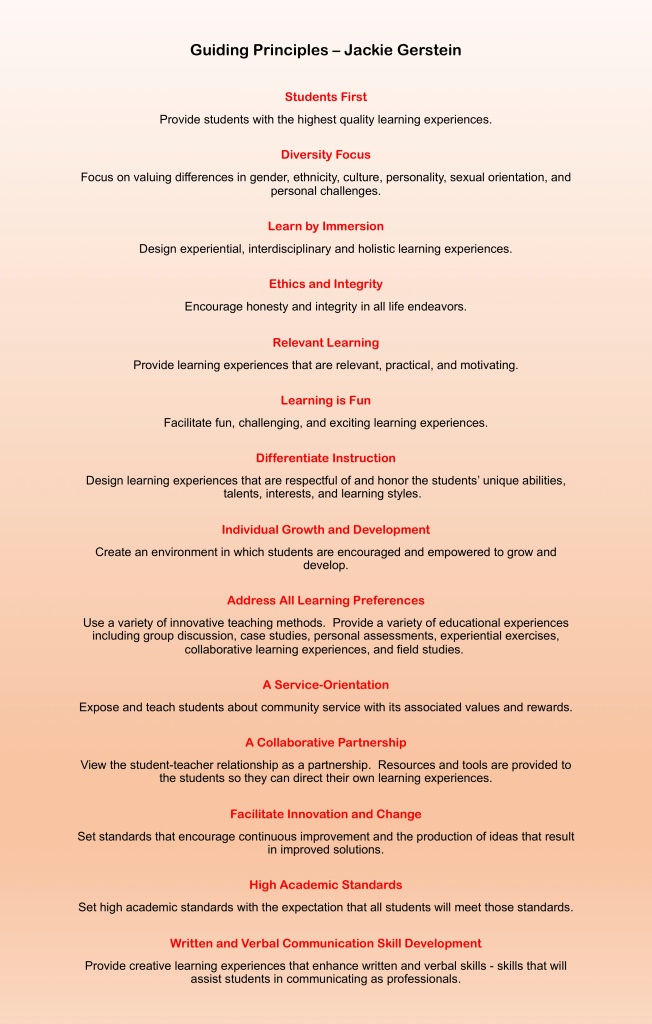
My vision-mission was not just a mental exercise I completed. It, along with my guiding principles, was developed to inform everything I do in my classrooms. I frequently revisit them as a form of self-assessment. Which principles are currently guiding my instructional strategies? Which ones are not being integrated into my classroom activities? What changes do I need to make to do so?
Here are some resources for developing your own vision-mission statement:
- How To Write A Teaching Statement That Stands Out – https://www.unl.edu/gradstudies/current/development/how-write-teaching-statement-stands-out
- Creating a Teacher Mission Statement – https://education.cu-portland.edu/blog/classroom-resources/creating-teacher-mission-statement/
My 2019 Highlights
The post describes my 2019 Highlights. I did this for four main reasons:
- We, especially as teachers, should spend more time reflecting on what we are doing well – our accomplishments. Often, we don’t get the recognition we deserve. Too often educators feel too timid or undeserving to publicly acknowledge their accomplishments believing that others will perceive them as braggarts. (Self-disclosure: I actually spend way too much time being critical of myself so this is actually really healthy for me to do.)
- I believe and include in the bio I share for conference presentations and PD consults that one of the major responsibilities of the modern day educator is to share resources, learning activities, thoughts, and insights with other educators. I do so through this blog and my Twitter account.
- I have a “nice box” which, for me, is actually a basket. It is where I put cards and gifts I have received from my students over the years. I tell my pre-service teachers to start one so that when they are feeling ineffective, challenged, or disillusioned, they can go to it for a boost. This post will act as a type of “nice box.”
- Finally, I am a strong proponent of being a reflective practitioner. For more about this, see Stephen Brookfield’s book, Becoming a Critically Reflective Teacher. Blogging, such as this post, is part of my reflective practice.
Here is my list.
I had a book on maker education published by ASCD.
I really love the maker movement. I have always had my students make things. As such, I was often seen as an outlier by the other teachers and principals at my schools. Now that it has become more mainstream, there is a much greater acceptance by my colleagues (and it helps that I now have an amazing and supportive principal). Words cannot describe how exciting I find this movement and hope it stands the test of time in our schools.
Writing this book took about two years but it fits with my mission of sharing resources, learning activities, and ideas with other educators. Given the amount of work it took, I am proud of this accomplishment. The description of the book is:
Transferring this innovative, collaborative, and creative mindset to the classroom is the goal of maker education. A makerspace isn’t about the latest tools and equipment. Rather, it’s about the learning experiences and opportunities provided to students. Maker education spaces can be as large as a school workshop with high-tech tools (e.g., 3D printers and laser cutters) or as small and low-tech as the corner of a classroom with bins of craft supplies. Ultimately, it’s about the mindset—not the “stuff.”
In Learning in the Making, Jackie Gerstein helps you plan, execute, facilitate, and reflect on maker experiences so both you and your students understand how the knowledge, skills, and attitudes of maker education transfer to real-world settings. She also shows how to seamlessly integrate these activities into your curriculum with intention and a clearly defined purpose (http://www.ascd.org/publications/books/119025.aspx).
I keynoted and presented a workshop at Edutech Asia in Singapore.
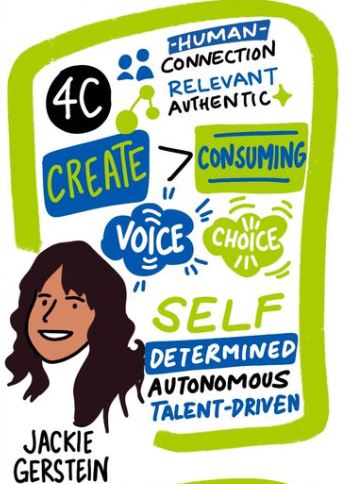
I did a keynote in front of 1000+ people. Due to this anticipated audience size, I was worried about it for months. Because I focus on active participation, I asked them to make a one page book and then answer some reflection questions. It didn’t go over as well as I would have liked (yes, being self-critical) but I did something I feared. I also (re)learned I am a facilitator of experiences rather than a public speaker.
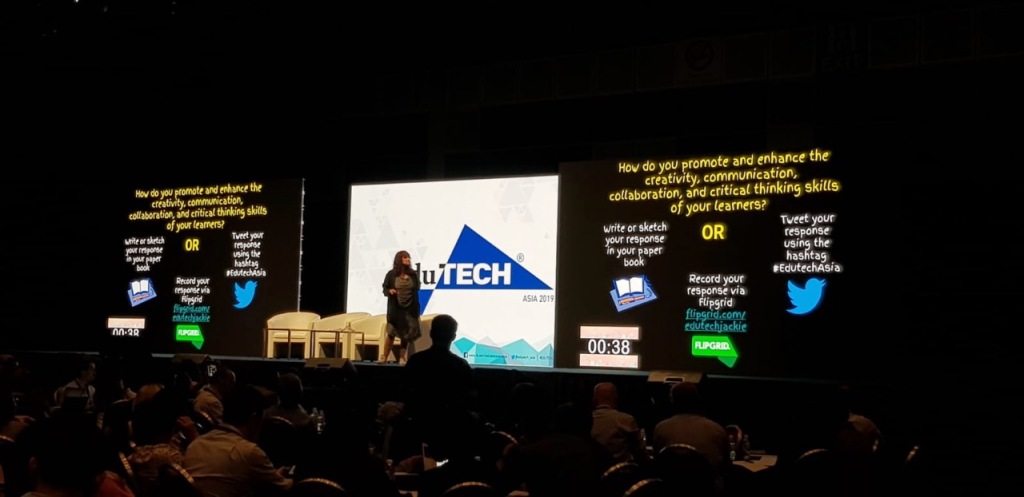
Slides from my keynote:
The final day I did a full day workshop. I was excited about having teachers and other professionals from Singapore, Thailand, Philippines, Cambodia, India, Malaysia, and New Zealand attend. This was way more successful – the participants being very engaged and excited. Here are the slides:
I did some very cool activities with my gifted students.
I love designing and implementing cross-curricular project-based learning with my gifted students, grades 3rd through 6th. Below are blog post links to some of my favorites from the 2018-19 school year.
Social Entrepreneurship
This is one of my favorites . . . ever. I am now in the process of doing it for a 3rd time with a current group of students. For more about this project, visit https://usergeneratededucation.wordpress.com/2018/05/13/elementary-social-entrepreneurship-a-perfect-steam-lesson/. Here is a video of a few of my students delivering raised monies to a local charity.
Design a Shoe
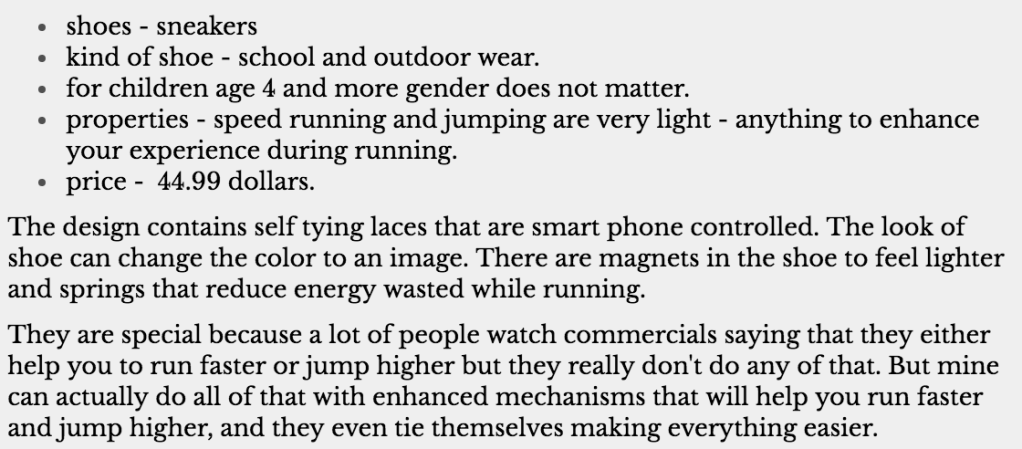
Game Jam: Designing a Video Game
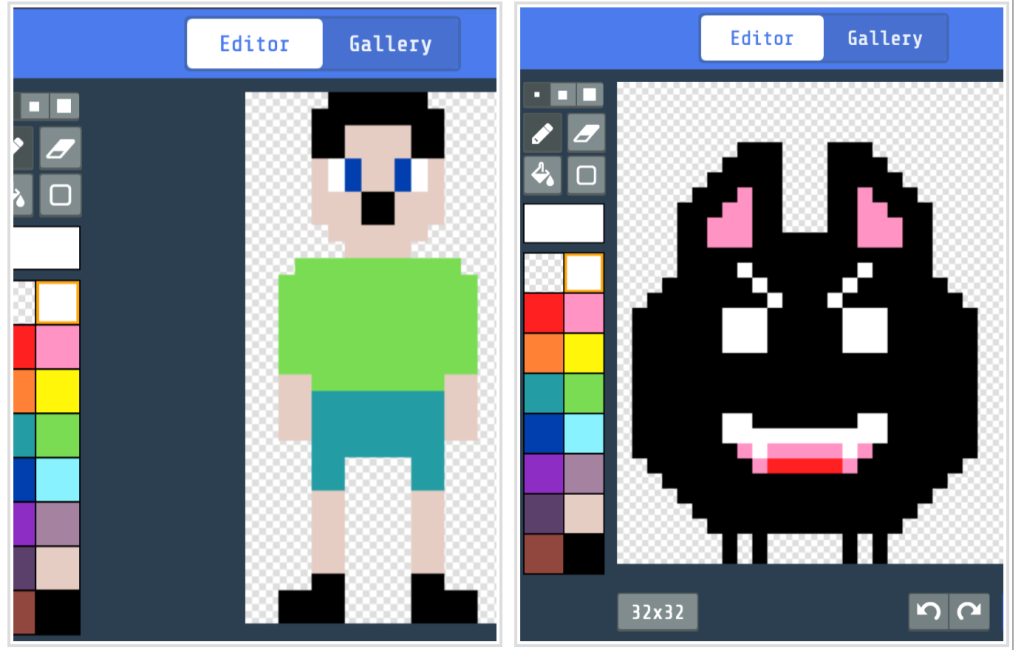
I passed my ISTE Certification
ISTE Certification is a competency-based, vendor-neutral teacher certification based on the ISTE Standards for Educators. It recognizes educators who use edtech for learning in meaningful and transformative ways (https://www.iste.org/learn/iste-certification)
Doing the portfolio for the ISTE certification was a bear of a task. I worked on it for weeks for several hours a day during this past summer. I did enjoy the process of aggregating and discussing some of the edtech projects I have done.
A Brain Science Hyperdoc Activity
Judy Willis, a neuroscientist turned teacher, in How to Teach Students About the Brain writes:
If we want to empower students, we must show them how they can control their own cognitive and emotional health and their own learning. Teaching students how the brain operates is a huge step. Teaching students the mechanism behind how the brain operates and teaching them approaches they can use to work that mechanism more effectively helps students believe they can create a more intelligent, creative, and powerful brain. It also shows them that striving for emotional awareness and physical health is part of keeping an optimally functioning brain. Thus, instruction in brain function will lead to healthier learners as well as wiser ones.
I teach a unit on the brain each year. This year I am teaching a 9th grade freshman seminar and decided to do a brain science unit with them. For this unit , I created a brain science hyperdoc for them. A hyperdoc is:
A HyperDoc is a digital document—such as a Google Doc—where all components of a learning cycle have been pulled together into one central hub. Within a single document, students are provided with hyperlinks to all of the resources they need to complete that learning cycle (https://www.cultofpedagogy.com/hyperdocs/).
The Brain Science Hyperdoc
Here is a completed brain science hyperdoc so you can see what was required and how one student completed it.
Making Models of the Brain
One of the hands-on activities was to work in a small group to create a model of the brain lobes + cerebellum out of playdoh, and then add post-it note “flags” for each part that indicates its name, function, and how to promote its health.
Creating Neuron Models
As a treat and to reinforce the parts of the neuron, students used candy to make a neuron, label its parts on a paper below, and then show as a group how one neuron would communicate with the next neuron and then to the next and so on.
Creative Writing Activity
One of the final projects of their brain science activities was to pick two activities from the list of creative writing activities about the brain found at https://faculty.washington.edu/chudler/writing.html. One of my students went all out to create a newspaper called The Brainiac News which follows. Using her own initiative, she started a Google Site to post a series of tongue-in-cheek stories. So impressive!

Design a Cardboard Chair Challenge
In Learning in the Making: How to Plan, Execute, and Assess Powerful Makerspace Lessons, I discuss a Framework for Implementing Maker Experiences as depicted in the following diagram.

I recently asked my 9th grade students to do a cardboard chair challenge. What follows is how the students went through this framework.
Framing or Frontloading the Experience
Framing or frontloading a maker education experience increases the chances that transferable skills and knowledge result, is framing or frontloading the activities as part of introducing them.
This activity was framed as a continuation of the team building and group communication activities in which the students participated the previous week. They were told that they needed to practice the effective communication skills they identified during the previous activities.
The Experience
The experience is, obviously, the doing or making part of the framework. Below is a cardboard chair challenge guide I found from Creativity Lab and which was shared with students via Google Classroom.
Materials
- Zip Snip Cutting Tool
- Makedo screws and mini-tools
- tape measure
- lots of cardboard
Designs Created in Tinkercad
In their small groups, they created their chair designs using Tinkercad.
Chair Construction
In their teams, students built their cardboard chairs using the Zip Snip Cutting Tool and the Makedo screws to connect the cardboard pieces (worked wonderfully I want to add).
Reflecting on the Experience
To reflect on their maker experiences, student work groups were given a set of cards (see below) to, first, pick cards from the deck to verbally answer, and to, second, choose three of the cards to answer in a blog post.


Example Verbal Responses to the Reflection Questions
Reflection Card Blog Post Examples


The Conceptualization: Researching
Finally, students were asked to create a infographics


